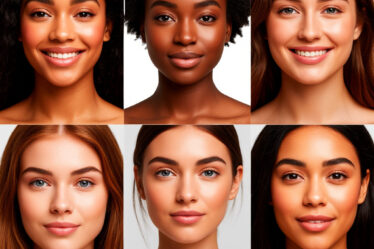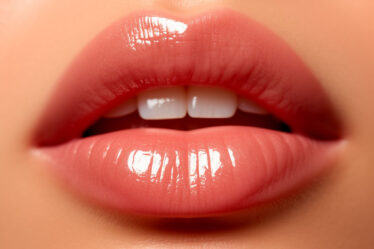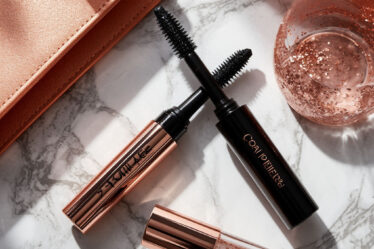
Blush is one of those makeup products that can truly transform your look. Knowing how to choose blush that complements your natural beauty makes all the difference. It can refresh your face and even shape your cheekbones a little. When picking blush, you have to think beyond just the shade. Texture, application style, and your color type play a huge role. So, how do you find the blush that fits you best?
Not sure why your makeup sometimes looks off? We’ve prepared a Beauty Club checklist with the most common mistakes—plus quick fixes for base, brows, eyes, and lips. You’ll find a PDF download at the end of this article to keep on hand for daily routines.
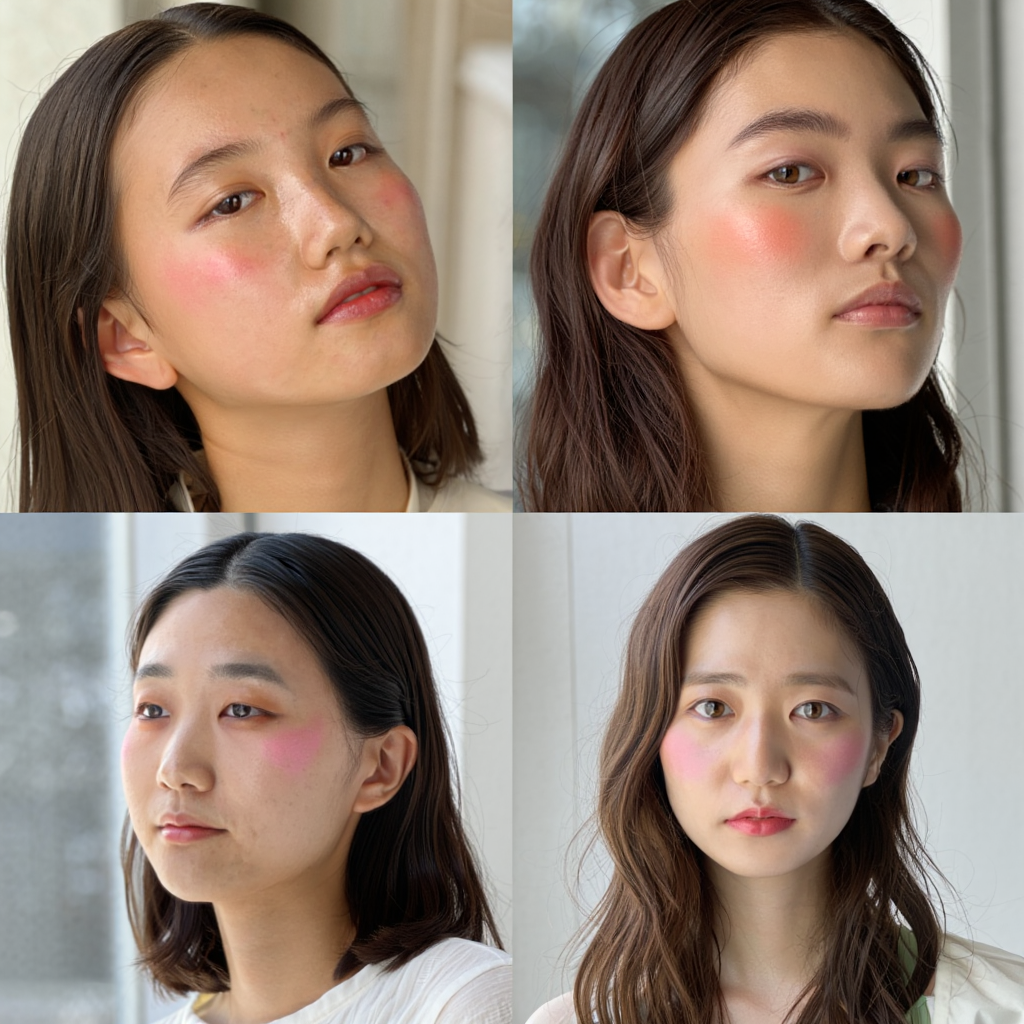
Blush and Face Shape: Finding the Perfect Match
Picking the right makeup is an art form. It’s not only about adding color but enhancing your facial features in the best way possible. To nail how to choose blush, you have to understand your face shape first. Then, pick the texture wisely and use the correct technique. These three things will make your cheeks look naturally fresh and balanced, no matter the occasion.
Contouring Your Cheeks for Ideal Proportions
Your face shape is where it all starts. For round faces, the goal is to make features appear longer. Apply blush diagonally from the center of your cheeks towards your temples. Avoid circular motions because that will highlight the roundness. Oval faces are lucky since they suit almost any application style, so feel free to experiment.
If you have a square face, soften those sharp angles by blending blush in gentle circular motions. Don’t go beyond your cheekbone line. For long or narrow faces, applying blush horizontally on the apples of your cheeks helps create width. Triangular faces with wider foreheads and narrower chins should focus blush on the middle cheek area to balance top and bottom zones.
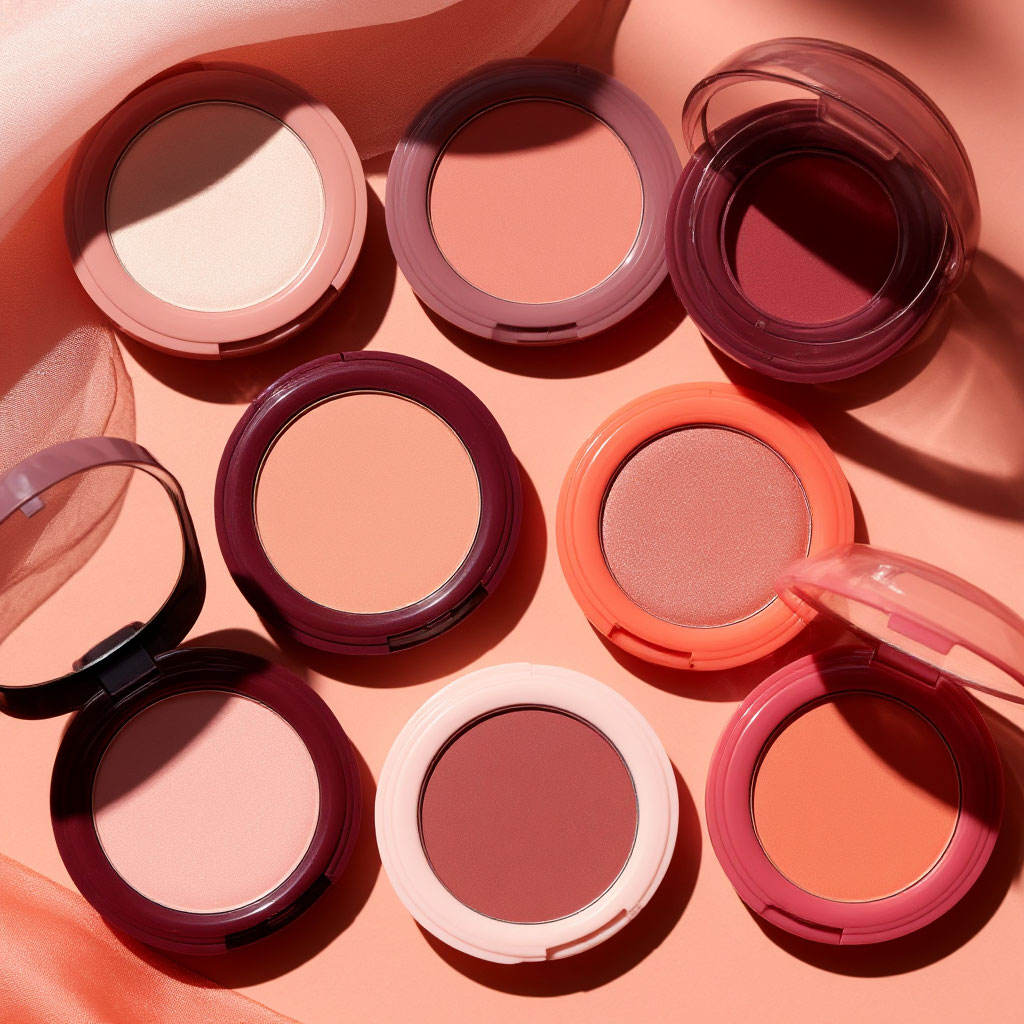
Color Type and Shades: Matching Your Natural Palette
Your skin tone and coloring impact which blush shades will make you look vibrant versus tired. This is key when you want to know how to choose blush by color type.
For warm color types like Spring and Fall, shades should lean toward golden and peachy hues. Here are some colors that work well:
- Peach.
- Coral.
- Apricot.
Fall tones can be deeper:
- Terracotta.
- Brick red.
- Pumpkin.
Avoid cool pinks here as they can look unnatural. Opt for blushes with golden shimmer to bring out your skin’s natural glow.
For cool tones such as Summer and Winter, blush choices are different. Summers often have porcelain skin with a rosy cast and ash-toned hair. Their ideal shades include:
- Soft pink.
- Lavender.
- Berry.
Winter types can pull off bolder blushes like:
- Raspberry.
- Cherry red.
- Plum.
These stand out beautifully against higher-contrast features. Avoid orange or rusty colors if you have a cool undertone since they may give your skin an unhealthy look. Instead, blushes with a slight blue tint will add subtle radiance.
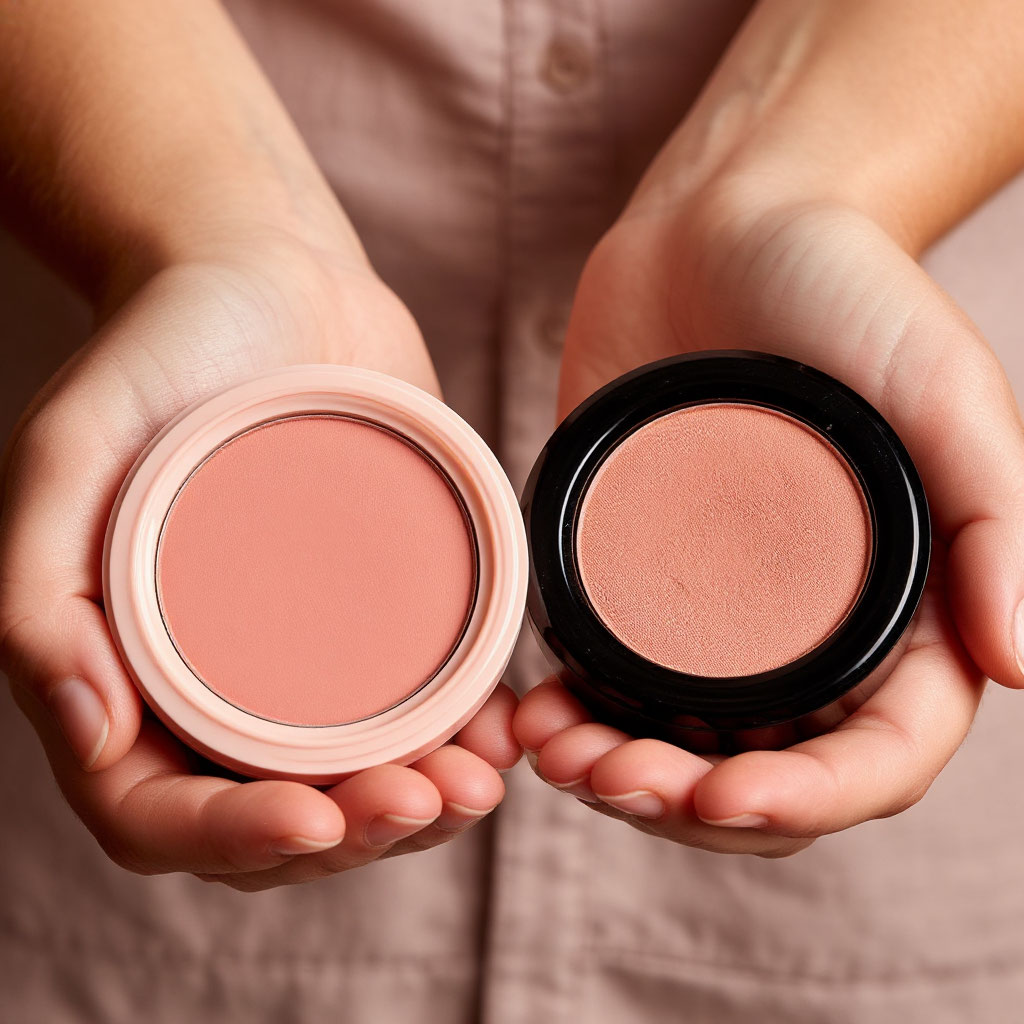
Cream or Dry? Texture Matters
Choosing between cream and powder blush is more than preference. Your skin type and the finish you want play a big role. Here’s a quick breakdown:
| Skin Type | Best Texture | Why |
| Oily/Combination | Powder | Controls shine, lasts longer |
| Dry/Mature | Cream | Adds healthy glow, smooths |
| Normal | Both | Depends on desired finish |
Why Texture Changes Everything
Cream formulas blend into the skin and create a natural, dewy effect. They work well in colder months or on dry skin. Powder blushes are ideal for summer or oily skin because they keep shine under control and have better staying power. Both types can be layered if you want more intensity, but careful blending is key.
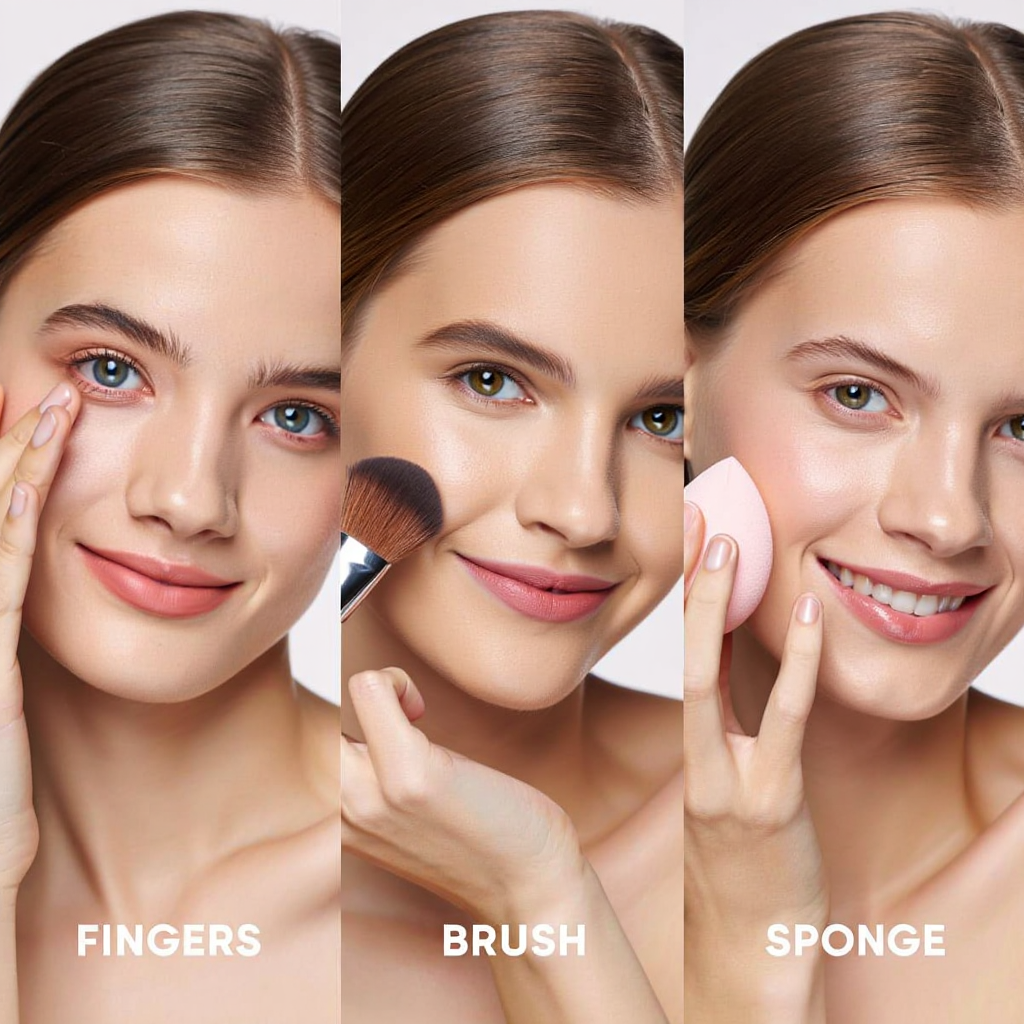
Application Technique: Steps to a Flawless Flush
Applying blush seems simple, but many make mistakes that lead to uneven color or harsh lines. Here’s how to apply blush correctly to get that fresh, natural glow.
Start by choosing the right tool based on your blush type. Use a fluffy angled brush for powders. Fingers or a dense sponge work well for creams. For liquids, a synthetic brush or beauty blender gives the best finish.
Follow these steps:
- Smile gently to find the apples of your cheeks.
- Apply a small amount of blush first; build up if needed.
- Use tapping or soft sweeping motions to blend.
- Blend the edges thoroughly to avoid sharp lines.
Tailoring Application to Your Face Shape
For round faces, sweep blush diagonally towards the temples to elongate. Square faces benefit from soft circular strokes focusing on the cheek center. Long faces need horizontal application on cheek apples to widen the appearance.
Fixing Your Blush
To keep your blush in place all day, use primer under makeup if your skin is oily. Finish with a sheer translucent powder. Dry skin types can skip powder or mist with thermal water for freshness.
Blush and the Rest of Your Makeup
Balance is key. If you wear bold lipstick, keep the blush subtle. With nude lips, richer blush tones are fine. The perfect blush looks like it belongs there — enhancing your natural beauty without overpowering it.
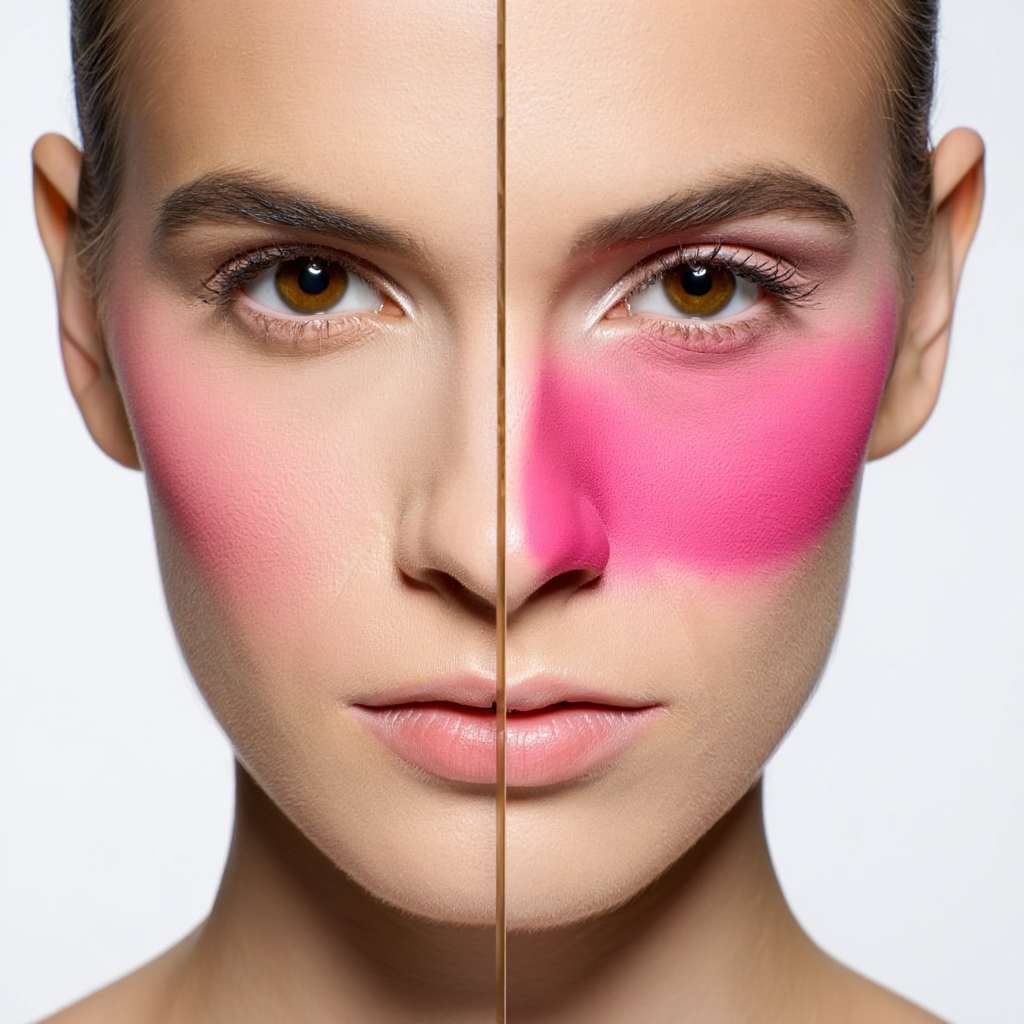
Makeup Mistakes: What to Avoid
Knowing how to choose blush means little if you make common errors while applying it. Here are some traps to watch out for:
Overly Bright or Dark Colors That Look Clownish
Using colors that are too intense can make your blush look unnatural and overpowering. For daytime, keep the application light and subtle. Evening makeup allows for richer tones, but blending thoroughly is key to avoid harsh spots.
Wrong Placement Near the Nose or Too High on the Face
Applying blush too close to the nose or placing it too high can distort your face’s natural proportions. The ideal placement is along the cheekbones, avoiding areas that make the face appear uneven or flushed in the wrong spots.
Using Cream Blush on Oily Skin Without Setting It
Cream blushes can slide off oily skin if not properly set. If you have oily or combination skin, always finish with a translucent powder or setting spray to keep your blush in place throughout the day.
Ignoring Color Type, Like Cool-Toned Blush on Warm Skin
Choosing a blush color that doesn’t match your skin undertone can create a jarring effect. For example, cool pinks on warm skin may look unnatural. Pay attention to your color type to select shades that enhance your natural complexion.
Skipping Final Checks in Different Lighting Conditions
Blush that looks good indoors under artificial light might appear harsh or patchy in natural daylight. Always check your makeup in various lighting settings before heading out to ensure it looks balanced and natural.
A good trick is to apply blush in natural light and step back from the mirror to assess. If you see the color clearly from a distance, it’s too much.
Knowing how to choose blush and apply it properly transforms your makeup routine. When you consider face shape, color type, texture, and technique, you get a flattering result every time. The goal is a natural flush that enhances your features without shouting for attention.
Try experimenting with new shades but start neutral. Take your time practicing different application methods. Makeup should highlight your personality and make you feel confident. Enjoy the process and wear your perfect blush proudly!
Ready to spot and fix errors faster? This 2-page checklist covers shade matching, blending, hygiene, and 60-second sanity checks before you head out.
Download the checklist (PDF): Beauty Club — Makeup Mistakes: What to Avoid

